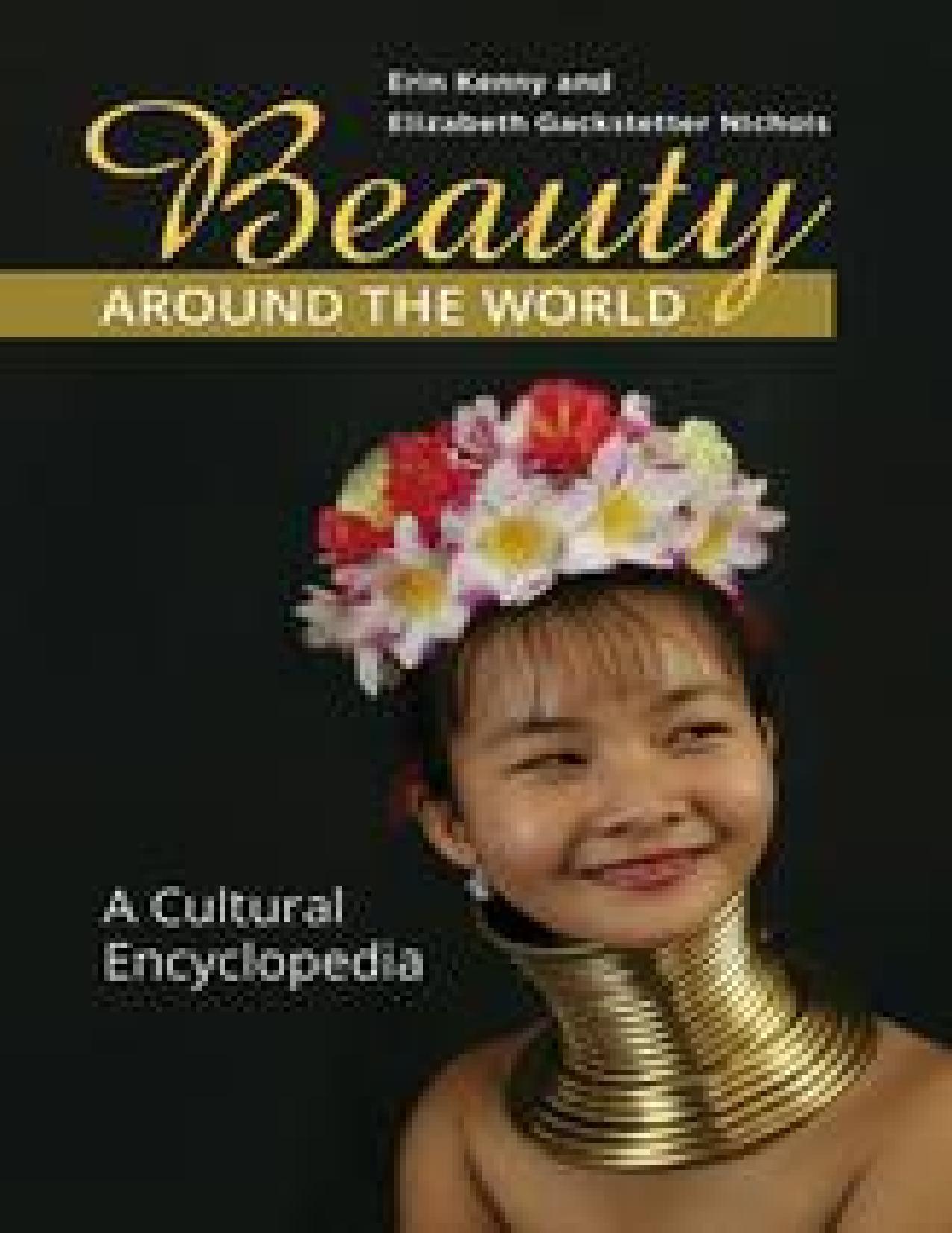Beauty Around the World: a Cultural Encyclopedia by Kenny Erin; Nichols Elizabeth Gackstetter;

Author:Kenny, Erin; Nichols, Elizabeth Gackstetter;
Language: eng
Format: epub, pdf
Publisher: ABC-CLIO, LLC
A Mursi tribal woman with elongated earlobes, Mago National Park, southern Ethiopia. (Antonella865/Dreamstime.com)
Over time, heavy earrings may stretch the earlobe, a look that might be preferred or discouraged in the society. In some cultures, intentional earlobe stretching is practiced in combination with piercing using a variety of techniques. “Tapering” is a practice of progressively increasing the size of a hole in the ear which in turn, extends the length of the lobe. Tapering involves the use of a conical rod that is inserted into the existing hole and creates a gradual stretching of the area without the risk of tearing, bleeding, or scar tissue formation. “Scalpelling” is a technique that dramatically increases the size of a piercing without necessarily adding to the length of the lobe. It relies on a scalpel or other sharp implement to cut at the edges of the existing hole in order to increase the diameter of the hole without stretching the ear. “Dead stretching” is another technique designed to lengthen the earlobe through massaging, tugging, or pulling at jewelry present in the piercing. The weight of the jewelry is often progressively increased in order to work with gravity to drag the length of the lobe down to the desired dimensions. In most cultures where stretching is a preferred practice, the process extends over the life course, as the skin naturally sags with age and becomes more amenable to stretching. Care is taken not to rip the flesh but to allow the lobes to descend gradually. With patience and a lifetime of effort, the highest-ranking and eldest members of the group are those with the most exaggerated stretched lobes.
The Maya intentionally stretched their piercings to accommodate ear plugs, which in turn lengthened the lobe. In Western cultures, neotribal aesthetics frequently focus on ear plugs, cylindrical jewelry that penetrates the earlobe and sometimes flares on one or both ends. Intentional earlobe stretching can also be seen among the Mursi of Ethiopia, the Maasai of Kenya and Tanzania, and the West African Fulani. Usually, the ears are fitted with long lengths of beads, which may be removed when not required for ceremonial or ritual occasions. The practice was also historically observed by Karenic women of Myanmar.
See also: Jewelry; Maya.
Further Reading
Rosaldo, Renato. 1986. “Red Hornbill Earrings: Ilongot Ideas of Self, Beauty and Health.” Cultural Anthropology 1, no. 3: 310–16.
Urban Body Jewelry.com. 2016. “Ear Stretching Guide.” Urban Body Jewelry [Web site]. Accessed June 15, 2016. https://www.urbanbodyjewelry.com/ear-stretching-guide.
M
MAASAI
The Maasai are a pastoralist people of East Africa, living primarily in Kenya and Tanzania. The Maasai concept of wealth, “enkishon,” means to be blessed with sons and daughters, especially to care for old age. The central idioms for a successful Maasai life focus on living harmoniously within a large network of kin and raising abundant, healthy cattle.
Male beauty is highly prized by the Maasai. An old Maa expression states, “A man’s head is worth an ox.” Between the ages of 18 and 35, young warriors (called moran) undergo extensive rites of passage that involve painful circumcision and seclusion.
Download
Beauty Around the World: a Cultural Encyclopedia by Kenny Erin; Nichols Elizabeth Gackstetter;.pdf
This site does not store any files on its server. We only index and link to content provided by other sites. Please contact the content providers to delete copyright contents if any and email us, we'll remove relevant links or contents immediately.
| Anthropology | Archaeology |
| Philosophy | Politics & Government |
| Social Sciences | Sociology |
| Women's Studies |
Cecilia; Or, Memoirs of an Heiress — Volume 1 by Fanny Burney(32068)
Cecilia; Or, Memoirs of an Heiress — Volume 3 by Fanny Burney(31463)
Cecilia; Or, Memoirs of an Heiress — Volume 2 by Fanny Burney(31413)
The Great Music City by Andrea Baker(30794)
We're Going to Need More Wine by Gabrielle Union(18641)
All the Missing Girls by Megan Miranda(14771)
Pimp by Iceberg Slim(13789)
Bombshells: Glamour Girls of a Lifetime by Sullivan Steve(13692)
Fifty Shades Freed by E L James(12923)
Talking to Strangers by Malcolm Gladwell(12888)
Norse Mythology by Gaiman Neil(12848)
For the Love of Europe by Rick Steves(11545)
Crazy Rich Asians by Kevin Kwan(8894)
Mindhunter: Inside the FBI's Elite Serial Crime Unit by John E. Douglas & Mark Olshaker(8711)
The Lost Art of Listening by Michael P. Nichols(7169)
Enlightenment Now: The Case for Reason, Science, Humanism, and Progress by Steven Pinker(6878)
The Four Agreements by Don Miguel Ruiz(6324)
Bad Blood by John Carreyrou(6283)
Weapons of Math Destruction by Cathy O'Neil(5842)
